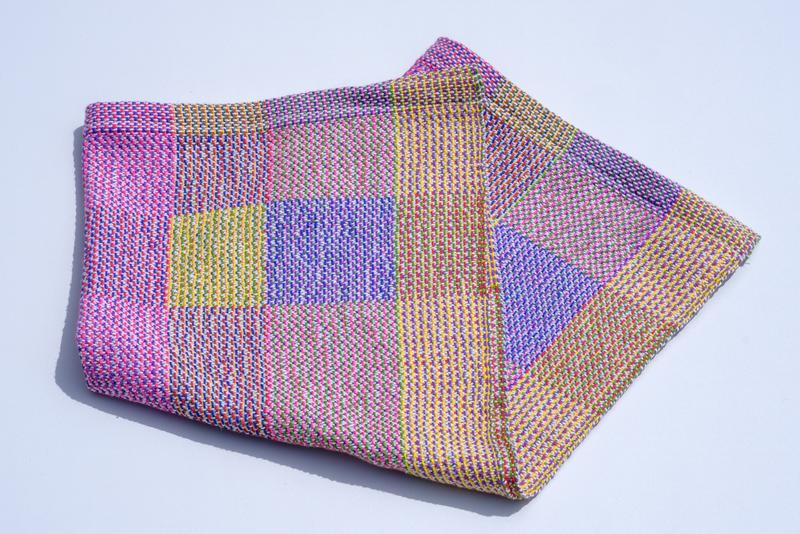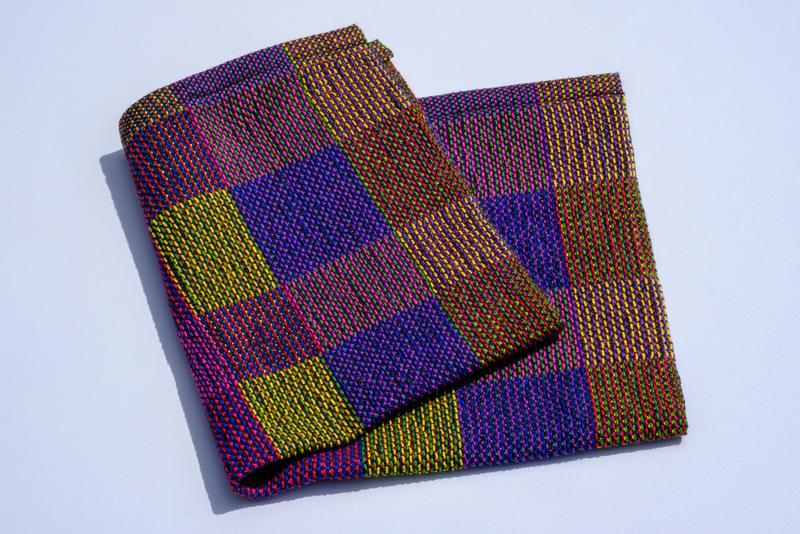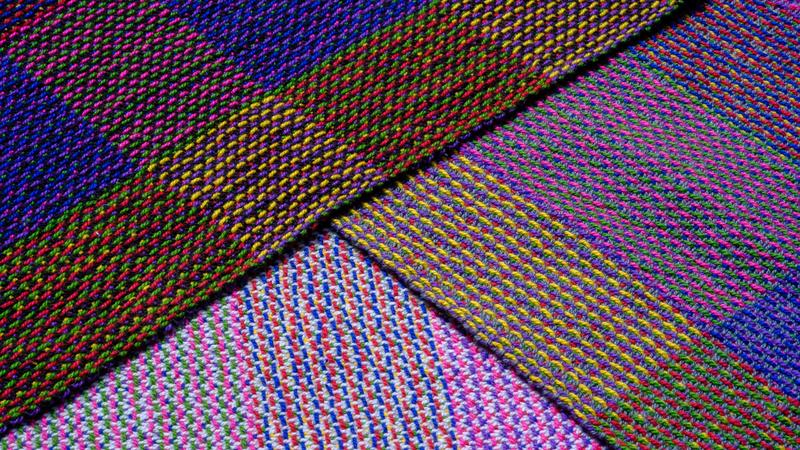Keeping things simple is difficult for me. I usually have to print out threading and treadling sequences of a weaving project, as the sequences are simply too long to know by heart. The set of kitchen towels I recently made was an exception to this custom. Just a straight twill threading and a very easy threadling sequence. No cheat sheets: just unencumbered weaving.

Color interplay
To be honest, I was a bit afraid I would get bored weaving these towels. However, I really enjoyed making them. The most complex part of this design was the use of different color blocks in the warp, and these color interactions kept the weaving process interesting.
Ever since I first discovered Turned Taquete, I thought about applying this technique to a warp made up of blocks of different color combinations. I came up with a very simple pattern in Fiberworks, but the color blocks that emerged in the draft looked really pleasing. So, I decided to give it a go.

I picked out six rainbow colors for this project: pink, red, yellow, green, blue and purple. I made four different groups, each consisting of four out of the six colors. Then, I used these groups to make differently sized color blocks in the warp. I couldn’t quite decide on the weft color. I was curious to see how the design would turn out with both a dark and a light weft. I solved this dilemma by making the project into a set of three kitchen towels: one each with a black, grey and white weft.
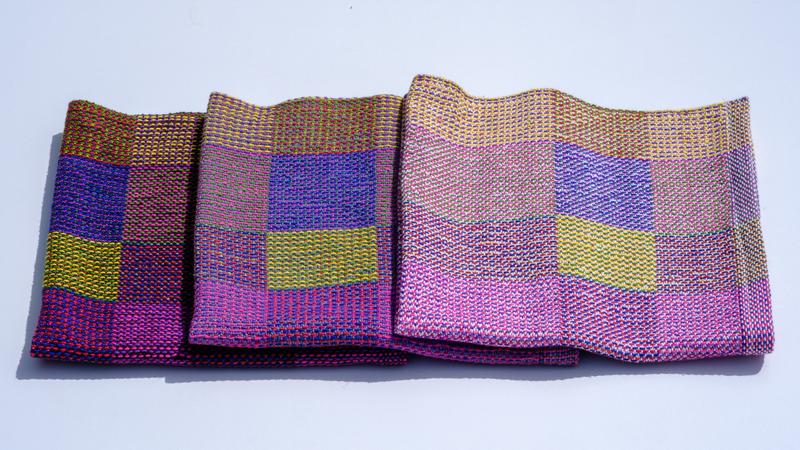
Nice and easy
For the yarn, I chose 8/2 cotton with a sett of 8 ends per centimeter. I had fun winding the warp. When it comes to warp winding, nothing beats a colorful warp. I was a bit nervous when I started threading. Over 400 ends of straight twill threading seemed like an endless task. Yet, all things come to an end and I soon found myself ready to weave.
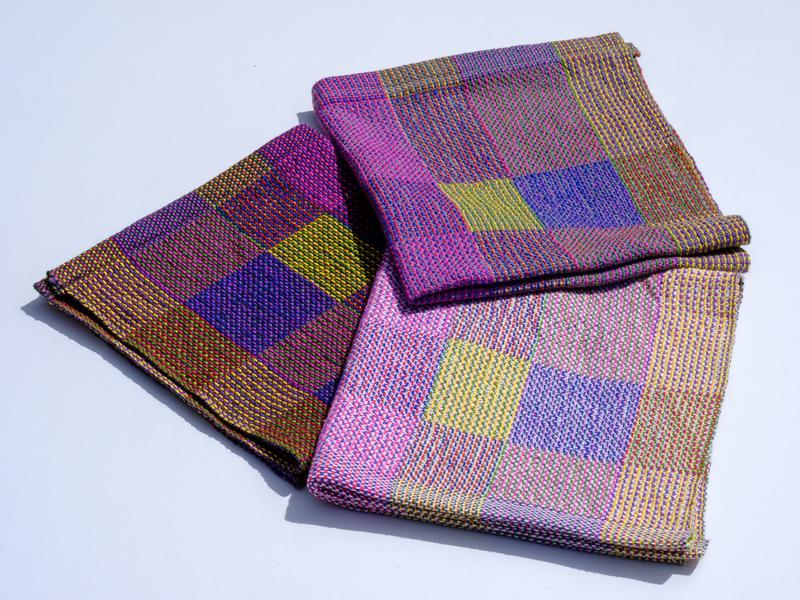
The treadling consisted of two blocks and each block used only three shafts. So, no keeping track of a long treadling sequence. Simply alternating three treadles for as long as I wanted the color block to be. I played around with differently sized color blocks in each of the three towels, to add some flavour.

The impact of color
The three towels turned out quite differently. As anticipated, the towel with the white weft looks lighter than the one with the black weft. I was pleasently surprised to see that the warp colors interact differently with each other depending on the color of the weft. Using a dark or a light weft really impacts the end result. I prefer the black and grey towels over the white one, but I am happy that I made all three of them. This turned out a good project to study color interactions.
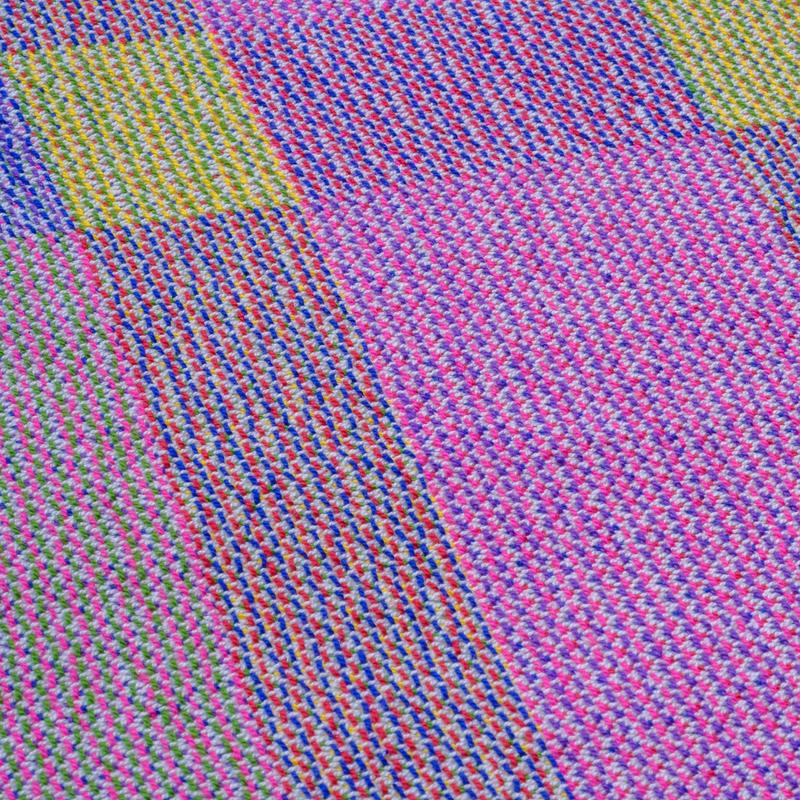

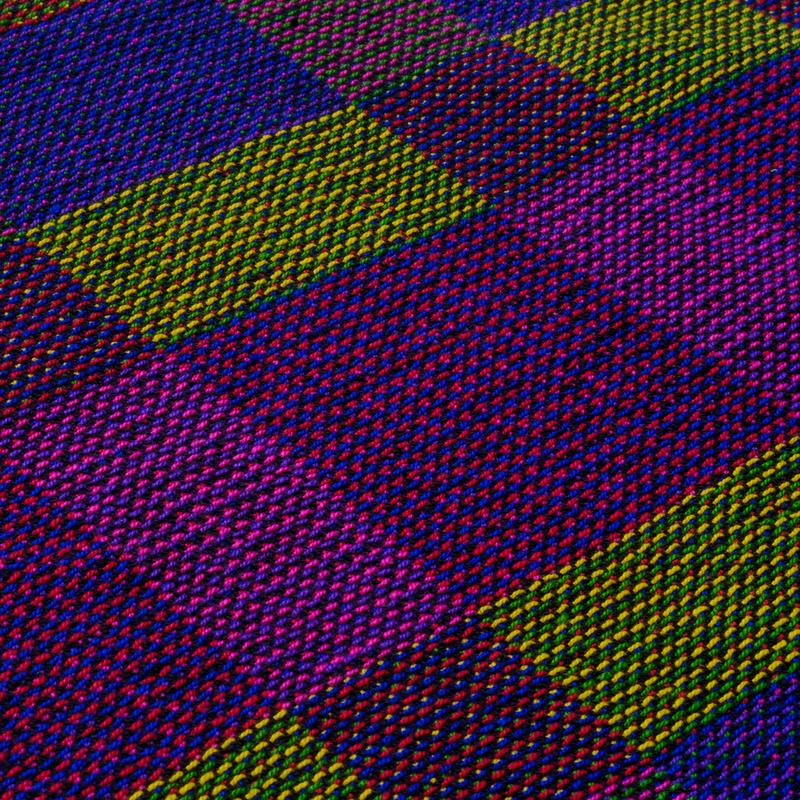
Creating long threading and treadling sequences will remain my standard approach to designing, but this simple project was a nice change of pace.
